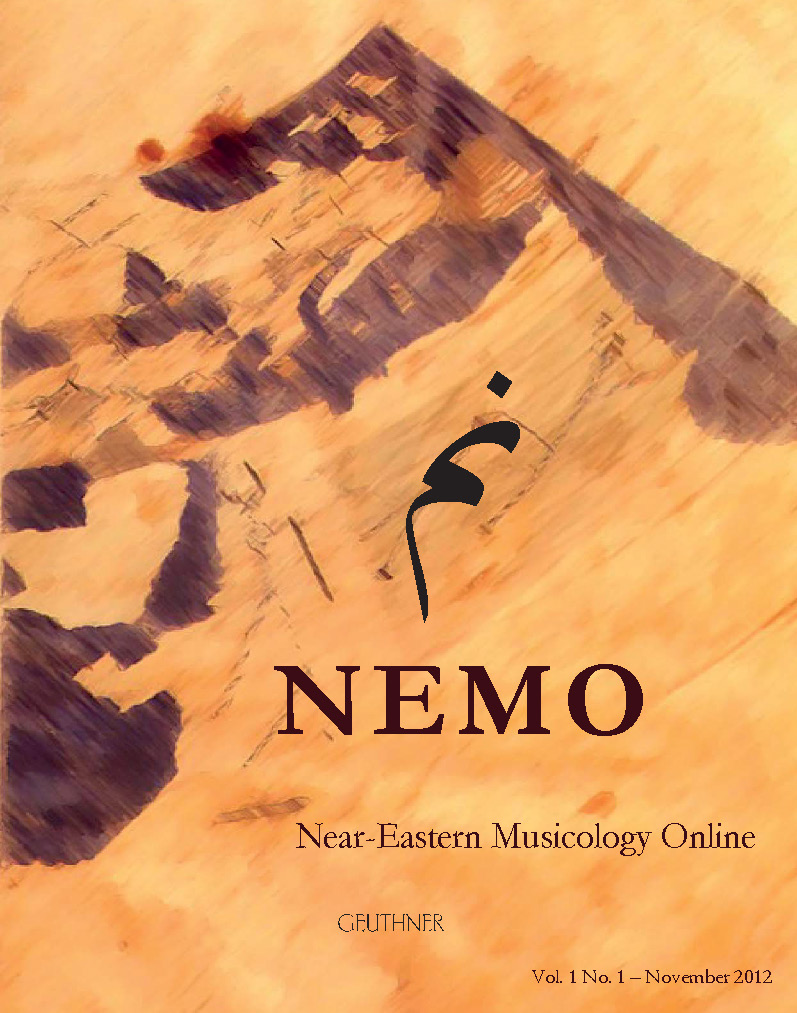English
[French translation below]
NEMO-Online is delighted to propose Amine Beyhom’s sequel to the dossier “MAT for the VIAMAP” which was published by NEMO-Online in November 2018. The post includes four video analyses of maqām music. The first part of the dossier combines three previously published analyses which cover different aspects of maqām, and follow an order of growing complexity of the analysis which does not interfere with its performance. The first ever 3D video analysis (A Huseynî Taksim performed by Neyzen Tevfik) undertaken by the research center of the author is included.
While the analyses in Part I of the dossier reveal the skills of exceptional maqām performers, Maḥmūd’s and a-sh-Shawwā’s performance investigated in Part II take us to heights of mastery and complexity rarely reached today, and gives a unique example of the Art of maqām as it came to be fully developed towards the beginning of the 20th century.
The first three video analyses tend to confirm that maqām and other forms of music can be better explained and analyzed by techniques extensively used in the 1950s and 1960s by eminent ethnomusicologists such as Charles Seeger. Compared with previous releases accompanying “MAT for the VIAMAP”, new, improved techniques are used in present analyses of these three performances in order to better understand the music, while the analysis of the qaṣīda Yā Nasīm a-ṣ-Ṣabā performed by ʿAlī Maḥmūd and violinist Sāmī a-sh-Shawwā uses even more refined techniques to remedy the problems that arise with historical recordings which are of the paramount importance for the understanding of the evolution of maqām music during the last century. A research on the lyrics of the qaṣīda (by Shaykh Maḥmūd a-sh-Shahhāl from Tripoli – Lebanon) is included at the beginning of Part II.
Amine Beyhom: “The Lost Art of Maqām – With four video analyses of performances by Evelyne Daoud, Neyzen Tewfik, Hamdi Makhlouf, and by ʿAlī Maḥmūd and Sāmī a-sh-Shawwā,” Near-Eastern Musicology Online 5 8 |2019-11| p. 5–64.
- Accompanying material:
- One video analysis of Yā Nasīm a-ṣ-Ṣabā performed by ʿAlī Maḥmūd and violinist Sāmī a-sh-Shawwā with an additional third-tempo version (see also below)
- Three previously published video analyses:
- Video analysis of “Akh tagorye hʾashyrie” (Syriac Orthodox Chant) sung by Evelyne Daoud
- Video analysis of an improvisation for the ʿūd played in maqām Ṣabā by Hamdi Makhlouf
- Video analysis in 3D of a Huseynî Taksim performed by Neyzen Tevfik
- Slide-projection based video explaining heterophony through the use of audio editing and mixing tools with four extracts from songs
Video analysis of/Video-analyse de Yā Nasīm a-ṣ-Ṣabā performed by/par ʿAlī Maḥmūd and/et Sāmī a-sh-Shawwā
Third-tempo version of the above video analysis / Version ralentie trois fois de la vidéo ci-dessus
Slide-projection based video explaining heterophony / Vidéo basée sur des diapositives expliquant l’hétérophonie
Français
Nous avons le plaisir à NEMO-Online de publier ce nouvel article (en anglais) par Amine Beyhom qui constitue une suite au dossier “MAT for the VIAMAP” publié dans NEMO-Online en Novembre 2018, avec quatre analyses vidéo de musique de maqām. La première partie du dossier réunit trois analyse publiées précédemment et qui couvrent différents aspects du maqām, suivant une complexité croissante de l’analyse (mais pas de la performance). La première vidéo analyse en 3D (d’un Taksim [en] Huseynî par Neyzen Tevfik) effectuée par le centre de recherche de l’auteur est incluse parmi ces trois.
Les trois analyses proposées en première partie de ce dossier expliquent divers aspects et compétences techniques ou artistiques de la chanteuse (Evelyne Daoud) et des deux musiciens (Neyzen Tevfik et Hamdi Makhlouf), tandis que la deuxième partie est consacrée à la qaṣīda Yā Nasīm a-ṣ-Ṣabā chantée par le cheikh ʿAlī Maḥmūd accompagné par le violoniste Sāmī a-sh-Shawwā, un exemple unique de l’Art du maqām au faîte de son développement au début du XXe siècle.
Si les trois premières analyses tendent à confirmer que la musique de maqām et d’autres peuvent mieux être expliquées et analysées avec les techniques déjà mises en œuvre par d’éminents ethnomusicologues – tel Charles Seeger – dans les années 1950 et 1960, et utilisent les techniques supplémentaires mises au point par l’auteur et son équipe, l’analyse de Yā Nasīm a-ṣ-Ṣabā a nécessité la mise au point de techniques encore plus raffinées pour remédier aux problèmes inhérents à de tels enregistrements historiques – ceci, d’autant plus que l’importance de ces enregistrements pour une meilleure compréhension de cette musique n’est plus à démontrer. Notons qu’une recherche sur les paroles de la qaṣīda (par le cheikh Maḥmūd a-sh-Shahhāl de Tripoli – Liban) est incluse au début de la deuxième partie.
Amine Beyhom: “The Lost Art of Maqām – With four video analyses of performances by Evelyne Daoud, Neyzen Tewfik, Hamdi Makhlouf, and by ʿAlī Maḥmūd and Sāmī a-sh-Shawwā,” Near Eastern Musicology Online 5 8 |2019-11| p. 5–64.
- Vidéos d’accompagnement:
- Une vidéo-analyse de Yā Nasīm a-ṣ-Ṣabā parʿAlī Maḥmūd et Sāmī a-sh-Shawwā avec une version ralentie trois fois (voir aussi ci-dessus)
- Trois vidéo-analyses publiées précédemment:
- Vidéo-analyse de “Akh tagorye hʾashyrie” (Chant Syriaque Orthodoxe) par Evelyne Daoud
- Vidéo-analyse d’une improvisation sur leʿūd dans le maqām Ṣabā par Hamdi Makhlouf
- Vidéo-analyse en 3D d’un Taksim en Huseynî joué par Neyzen Tevfik
- Une vidéo basée sur des diapositives et expliquant l’hétérophonie par l’utilisation d’outils d’édition et de combinaison de fichiers audio sur quatre extraits de chants


